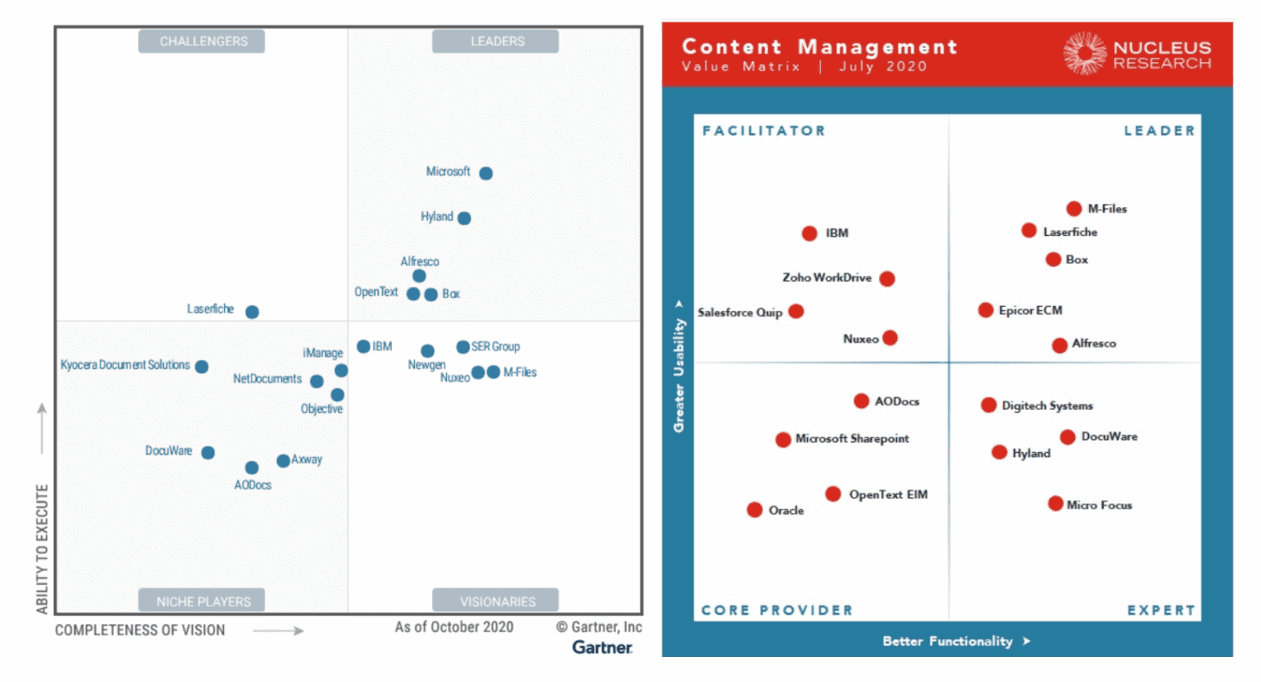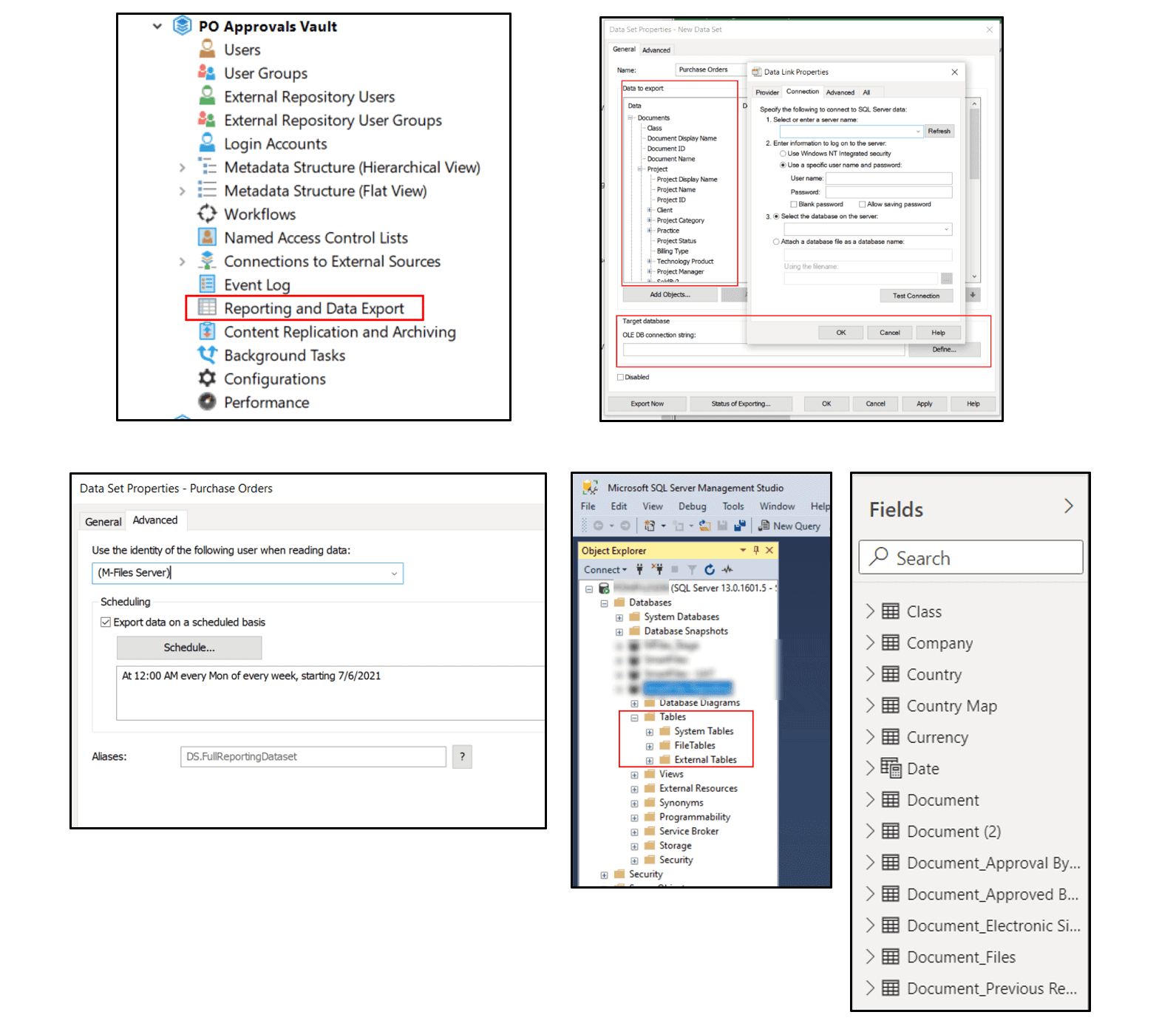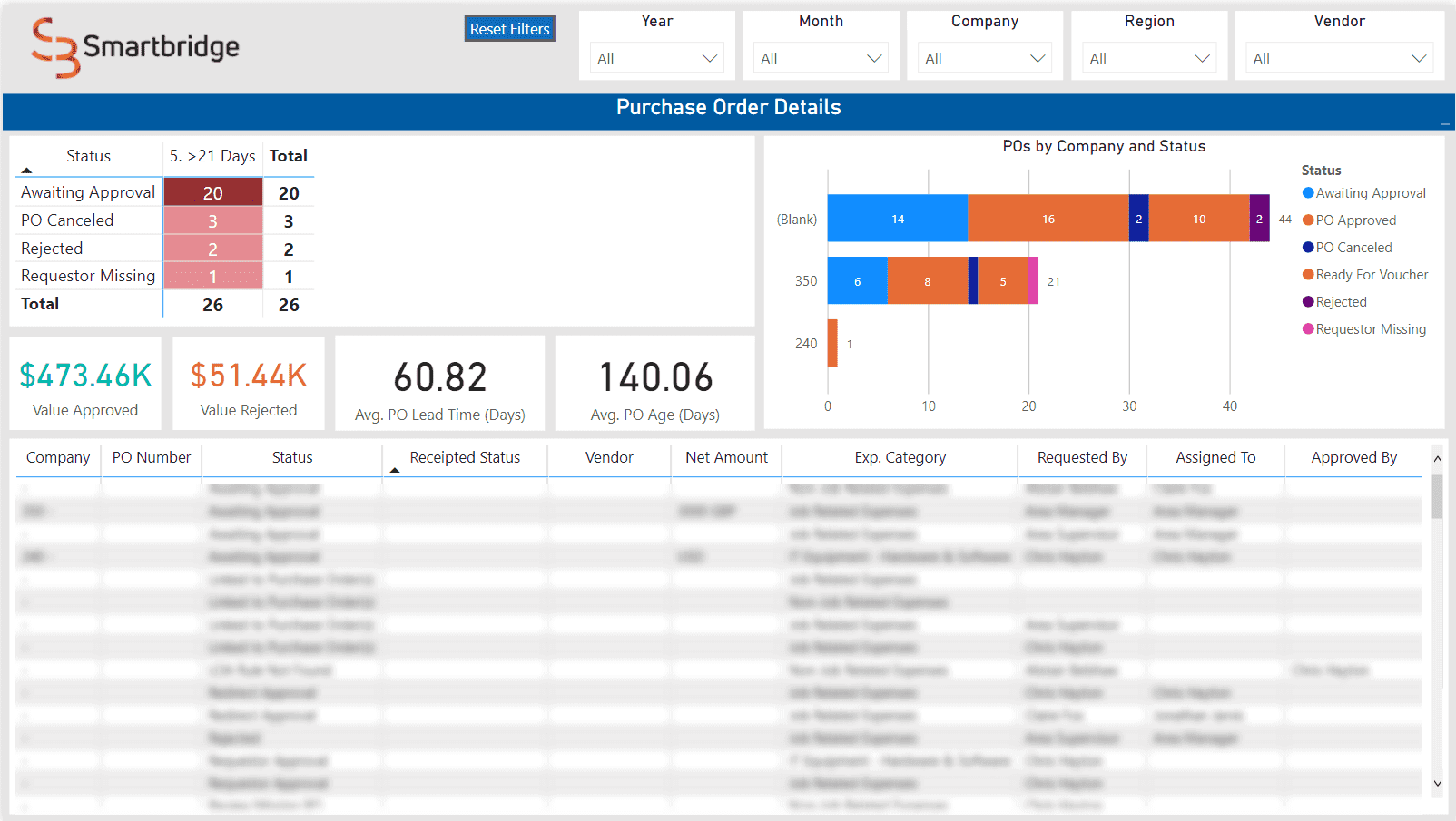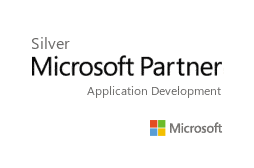Evolving Intelligent Information Management with Power BI
Having just an Intelligent Information Management tool or a Business Intelligence tool can be powerful for an organization individually, but imagine the possibilities that can come when combining the two. In this article, one of our consultants dives into how pairing M-Files with Power BI can bring invaluable insights to your organization.
We know that establishing M-Files or any Intelligent Information Management (IIM) solution as a core within your organization has numerous benefits. There are a whole host of features and capabilities that have placed M-Files consistently amongst the leaders and visionaries within their industry.

Courtesy of Gartner and Nucleus Research
M-Files recently announced that they will be heavily investing in key areas such as UI, Self-Service, and Analytics. Regardless of when this comes out, organizations can be assured that M-Files has consistently been delivering on their vision by adding new features, capabilities, and content through their monthly releases.
Until then, businesses and organizations will still have to make massive shifts to stay ahead of the competition as reliance on data has rapidly increased even more so than the past few years. You don’t have to go far to see organizations, such as the CDC or John’s Hopkins, implementing complex yet informative dashboards or applications for us to stay attuned with the fluctuations each day.
This is where Microsoft Power BI comes in. Power BI is a leading Business Intelligence tool that can provide valuable insights for organizations and translate data into digestible and empowering visuals. You can learn more about Power BI here and its incredible, rapid growth since leveraging Microsoft Azure. Now the question is how can organizations extend these same benefits while using M-Files?
The Process
In the M-Files Admin tool, an Administrator can setup a scheduled or one-time export for various datasets. This is extremely customizable.
The Admin can select the appropriate data points and relationships and export them to a defined, target database. In this example, the data is being exported to a MS SQL Database. This same database is then used as the Data Source within Power BI to create customized visualizations and dashboards.
Here is where Power BI can come in and provide insights on processes that are streamlined and automated with M-Files. In this example, the process that has been automated is for Purchase Order Approvals. By using the data exported from M-Files, Power BI can dynamically group Purchase Order documents within the M-Files Approval Workflow and the Workflow State in which the Purchase Order is currently in.

Data in M-Files and MS SQL Database

Data presented in Power BI
The Results?
The Accounting department can now take advantage of M-Files together with Power BI to identify bottlenecks, performance metrics, and view data in an easy and digestible way to make better business and financial decisions. These are benefits that organizations and teams can tangibly see all while enhancing their processes, compliance, security, and collaboration capabilities through this powerful combination. Learn more about M-Files and Power BI with our recent M-Files AP Automation post.
Looking for more on systems modernization?
Explore more insights and expertise at smartbridge.com/modernization
There’s more to explore at Smartbridge.com!
Sign up to be notified when we publish articles, news, videos and more!
Other ways to
follow us:




